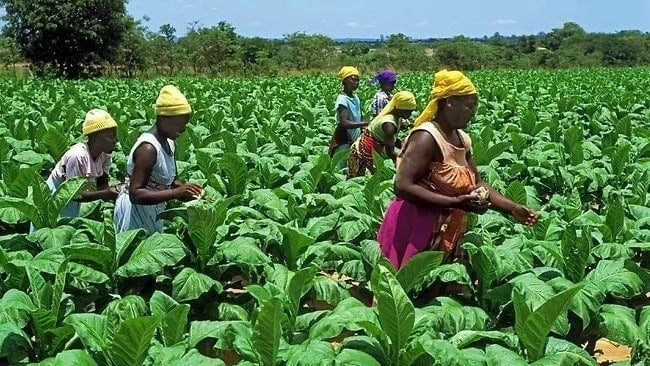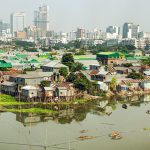Developing countries
need to dramatically increase agricultural innovation and the use of technology
by farmers, to eliminate poverty, meet the rising demand for food, and cope
with the adverse effects of climate change, says a new World Bank report released
on Monday.
The relative stagnation in agricultural
productivity in recent decades, particularly in South Asia and Africa where the
vast majority of the poor live, underscores the need for new ideas to improve
rural livelihoods.
Renewed investment to increase new knowledge and ensure its adoption can help harness the large potential gains to be made in agricultural productivity and, hence, income, says the Harvesting Prosperity: Technology and Productivity Growth in Agriculture report.
It notes that nearly 80 percent of the world’s extreme poor live in rural areas, with most relying on farming for their livelihood. Poverty reduction efforts, thus, need an intensive focus on raising agricultural productivity, which has the largest impact of any sector on poverty reduction, roughly twice that of manufacturing.
“Boosting productivity in the agriculture sector can lead to more and better jobs while enabling more people to move off-farm to cities to pursue other opportunities. This requires comprehensive reform of domestic agricultural innovation systems, more effective public spending and the cultivation of inclusive agricultural value chains with an increased role for the private sector,” said World Bank Group Vice President for Equitable Growth, Finance and Institutions, Ceyla Pazarbasioglu. “New technologies are improving access to and costs of information, finance and insurance in all sectors, including agriculture. This can help raise the productivity of low skilled farmers, but only with the right incentives and capabilities to develop and scale these technologies,” she added.
The report examines the drivers and constraints to agricultural productivity and provides pragmatic policy advice. It notes that while in East Asia, crop yields have increased six-fold in the past four decades, contributing to the dramatic reduction in poverty in China and other East Asian countries, it has only doubled in Sub-Saharan Africa and parts of South Asia, with corresponding disappointing reductions in poverty.
In addition, climate change, together with a deteriorating natural resource base, will hit agriculture hard, impacting the poor and vulnerable, precisely in Africa and South Asia.
The key driver for increasing agricultural productivity and rising incomes is the adoption of innovative technologies and practices by farmers. This will enable farmers to raise yields, manage inputs more efficiently, adopt new crops and production systems, improve the quality of their products, conserve natural resources, and adapt to climate challenges.
However, the world is facing a widening research and development (R&D) spending gap, even as government funding for agriculture is reaching new heights. In developed countries, investment in agricultural R&D was equivalent to 3.25 percent of agricultural GDP in 2011, compared with 0.52 percent in developing counties. Among the latter group, Brazil and China invested relatively high amounts into agricultural R&D, while Africa and South Asia had the lowest spending relative to agricultural GDP. In fact, in half of African countries, R&D spending is actually declining.
Governments need to consider both public and private research and technology transfer in strengthening their overall innovation system. Repurposing the current public support for agriculture offers a significant opportunity to revitalize public agricultural research systems, invest in agricultural higher education, and create the enabling conditions to leverage private sector R&D. The private sector, in turn, can stimulate more rapid access to new technologies for farmers. In developed countries, private companies contribute about half the total R&D spending targeting the needs of farmers, and as much as one-quarter in large emerging economies, such as China, India, and Brazil. Policy tools to encourage more private R&D in agriculture include reducing restrictions on market participation, encouraging competition, removing onerous regulations, and strengthening intellectual property rights.
“Agriculture in Africa and South Asia faces an innovation paradox. While the economic returns to and growth effects of R&D and knowledge diffusion are documented to be very high, research spending is decreasing in critical areas of the world and local universities and think tanks are not keeping up. Policy makers in developing countries need to give careful attention to reversing these trends and improving the broader enabling environment to encourage private sector contribution as well,” said World Bank Chief Economist for Equitable Growth, Finance and Institutions, William Maloney, who is the lead author of the report.
While new communication technologies make improving access to information, finance and insurance more feasible than before, small farmers face major barriers to adopting the new technologies that such research efforts yield.
“Poor information about new technologies, absence of insurance and capital markets, high market transaction costs, land tenure insecurities and lack of transportation infrastructure are inhibiting adoption and diffusion of new technologies among farmers. Together with increased R&D spending, sustained efforts are needed to remove these barriers,” said World Bank Global Director for Agriculture and Food, Martien Van Nieuwkoop.
Source: Publicagendagh













